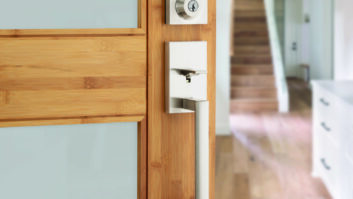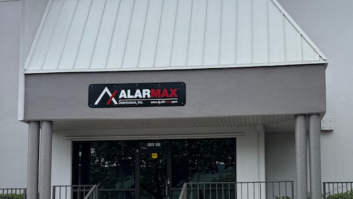NEW YORK — Car electronics retailers are eagerly awaiting the launch of aftermarket head units that incorporate the CarPlay and Android Auto technologies, which they contend will give consumers an aftermarket option for vehicles whose OEM sound systems lack the platforms.
Dealers are also hoping for a single SKU that incorporates both technologies and appeals to the broadest possible customer base.
With Apple’s Car Play and Google’s Android Auto, key functions of cable-connected smartphones and select smartphone apps are controlled via touchscreen, hard buttons and voice. The technologies deliver a vehicle-optimized interface to promote safer use of smartphone functions and apps in cars, and they provide a unified interface across OEM and aftermarket head units, Apple and Google have said.
The challenge for retailers, however, will be explaining the capabilities of both technologies and comparing them to the capabilities of aftermarket head units with proprietary touchscreen technologies that control cable-connected smartphones, some marketers note.
Though automakers will offer one or both technologies, “both Google Android Auto and Apple’s CarPlay look to be huge in the aftermarket,” said Jim Warren, merchandising and marketing VP at Seattle-based Car Toys. Because of all the CarPlay publicity so far, “we are receiving a significant level of inquiries,” he said. “Both the public and our sales team are eager for the software release. By the fourth quarter, we expect sales to be robust.”
Crutchfield’s Carl Mathews said the online retailer’s advisers “are getting customer questions related to CarPlay, but very few customers are asking about Android Auto just yet.” The senior director of mobile merchandising pointed out that “many customers are interested in integrating their smartphones with their car stereos in such a way that maximizes the utility of both devices and gives them the most enjoyable experience.” CarPlay and Android Auto “will help drive awareness of both factory and aftermarket choices integrating smartphones, and we’re thankful that safety was such an important design consideration,” he added.
Mike Cofield, CEO of 16-store Austin-based Custom Sounds chain, said the technologies will “help bump customers up to the next level of dollars” once they become aware of them. “The OEMs have not talked about it yet,” he said, and “people are not really aware of it yet unless they are true early adopters.”
For its part, CEA contends aftermarket CarPlay and Android Auto might help broaden the aftermarket’s customer base. The aftermarket base has narrowed to enthusiasts, but the Apple and Google technologies could drive non-enthusiasts to replace their OEM heads for ones that link more easily to their phones, CEA said.
Matt Graef, parts and accessories buyer at Custom Sounds, said he’s looking forward to aftermarket head units that combine both CarPlay and Android Auto. Those products would appeal to homes whose family members use a mix of Apple and Android smartphones.
Meanwhile Clarion envisions aftermarket head units that incorporate CarPlay, Android Auto and its proprietary Smart Access technology, which delivers headunit control of Cloud-based services not available via CarPlay and Android Auto. “That that will be a logical thing to do for aftermarket,” said Clarion marketing director Angela Flynn. Whatever options are implemented, however, Clarion will hold off until next year to offer CarPlay and Android Auto.
Clarion’s Smart Access head units, priced from an everyday $499 to $900, access Cloud-based services, including navigation apps, Twitter, Facebook, weather, news, Pandora, iHeartRadio and others. The Smart Access heads also control and display a phone’s music library, contacts and calendar.
For its part, Pioneer plans early summer availability of firmware upgrades to add CarPlay to select AppRadio- equipped A/V and navigation head units priced from $700 to $1,400. These heads also deliver control of apps also not available through CarPlay.
Alpine continues to plan for fall availability of its first CarPlay head unit, and Kenwood hasn’t said when it will offer aftermarket CarPlay.
These aftermarket companies have also committed to Android Auto but haven’t announced aftermarket plans.
Because of Google and Apple requirements, aftermarket heads incorporating the Android Auto or CarPlay technologies could be pricey, said Strategy Analytics analyst Roger Lanctot. Both require a screen resolution of more than 800 by 480, and CarPlay requires a frame rate of 30 fps to allow for smooth movement of navigation screens. The processing power required for such features, along with a “significant” Google licensing fee and a “likely” Apple licensing fee, will require pricing starting at about $800, Lanctot said.
Unlike aftermarket suppliers, Lanctot also believes the two technologies “further marginalize the valueadd of [aftermarket] companies. What do you need Pioneer’sAppRadio head units for if you are going to use CarPlay? Android Auto? MirrorLink ought to get a boost here since MirrorLink works with multiple OSs — but sadly not iOS — includes access to [the OEM] CAN bus, and offers multiple-screen [front and rear] capability for simultaneous display of different content from the same device.”
For his part, Connected Car Council managing director Keith Lehmann sees most gains accruing to automakers, whose customers have expressed dissatisfaction with complex OEM UIs. “By adopting a Google or Apple CarPlay platform, automakers now can offer a degree of infotainment familiarity to their customers and reduce complaints,” said the former Kenwood executive. “Car dealers can easily demonstrate an infotainment system that is based on a more widely accepted platform.”
As for the aftermarket benefit, Lehmann also breaks ranks with retailers. “I don’t see this as a strong feature for customers who are enthusiasts by nature,” he said. “They are purposely seeking out aftermarket solutions and probably don’t view a Google- or Apple-specific system as very attractive. Most aftermarket brands have very well-designed smartphone integration, and retailers can demonstrate this effectively. But aftermarket brands will offer one or both of these platforms anyway as a competitive measure.”
All of the choices are “healthy for consumers but a bit threatening for retailers who don’t keep themselves informed and ready to answer the questions they will surely receive,” Lehmann added. “Retailers can do themselves a favor by becoming the experts on smartphones, integration, factory systems and aftermarket solutions that are much better than what the automakers are offering.”












